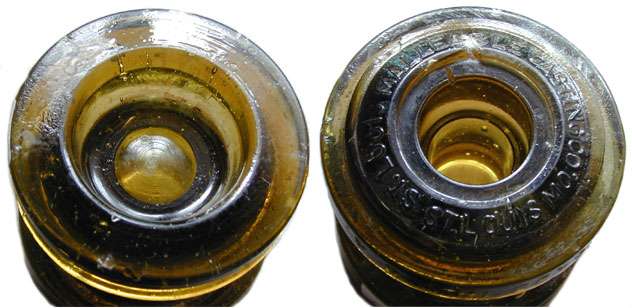
Here is an example of a CD 1052 spool where the "cap" or "plug" or "window" (as Hemingray referred to it) at the top of the pinhole as a result of the molding process has not been broken out. A sure sign this insulator was never put into service! The left photo shows the unbroken "cap" at one end of the pinhole, and the right photo shows the smoothly finished pinhole on the other end. On the right photo, you can see through the pinhole to the area on the bottom that was not broken out. A Hemingray patent mentions "... it has been common practice to mold and anneal the article with a window portion located in the lower extremity of its partial opening. Upon cooling of the article the window area is forcefully cracked out by impact ..." Although this statement relates to the CD 1049 all of these spools and through pinhole insulators were made by the same methods, and one can likely conclude that the "windows" as they were called were removed at the factory. This process happens on all insulators where the pin hole goes all the way through, such as on the CD 185 mine insulators, CD 190 (bottom part of the transposition CD 190/191 pair), etc. When the cap is punched out, it always leaves what everyone describes as "roughness around the pinhole". I used to think this was damage to the insulator from use, but now know it is "factory mint" and all pieces will show this evidence of the piece punched out. |